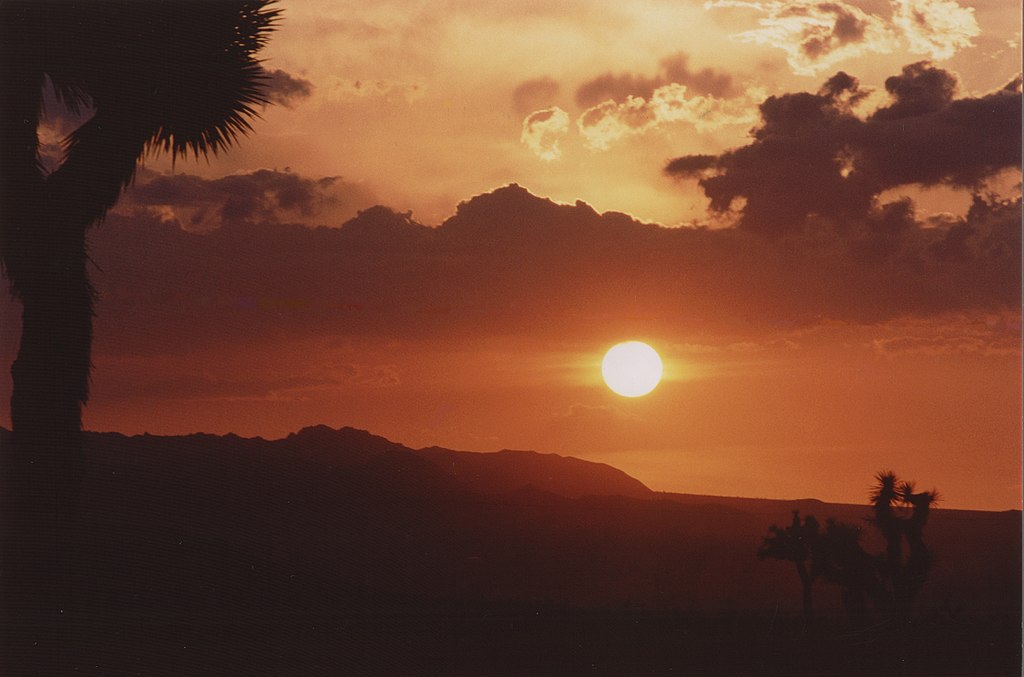Too much has been made of desert sunsets, particularly in the captions of oversaturated magazine photos. Because desert skies tend to be clear, they can’t match the Midwest for cloud effects or smog-inflamed cities for sheer longevity. But they are inferior only to novices who look, naively, in the direction of the setting sun, for the real desert sunset occurs in that unlikely direction, the east. It is opposite the sun that the last rays, deflected through clear skies, fall on the long, minutely eroded mountain ranges and bathe our eyes with light of decreasing wavelengths and cooling colors—vermilion to salmon to plum—transporting the eastern horizon to islands of pure yearning.
The desert rat, so in love with distance that he commonly carries binoculars to bring it up close, instinctively focuses the dreamlike mountains to heighten the effect. Here an odd reversal takes place, for what is plum to the naked eye, confined and enlarged, turns drab as cement, while the heaped knobs and extravagant spires turn out to be exfoliated granite. The observer knows how this stone weathers into rounded piles, how it crumbles underfoot, how it is colonized by black lichen. Fascinating as geology, it has been mastered by experience, turned to stone.
That is the revelation of desert sunsets: that the distance is so unmoored, so delicious, that you want to be there, to become that distance. And the closer you come—quickly, through binoculars, because it darkens even as you watch—the faster it burns into the ash of reality. Then you find out that where you want to be is precisely where you began, stripped to your bare eyes, watching as best you can, yearning.
Bruce Berger grew up in suburban Chicago. A poet and nonfiction writer, he is best known for a series of books exploring the intersections of nature and culture in desert settings. The first of these, The Telling Distance, won the 1990 Western States Book Award and the 1991 Colorado Book Award. His articles and essays have appeared in the New York Times, Sierra, Orion magazine, Gramophone, and numerous literary quarterlies; his poems have appeared in Poetry, Barron’s, Orion magazine, and various literary reviews in the United States, Scotland, and India, and have been collected in Facing the Music. His latest book is A Desert Harvest: New and Selected Essays (Farrar, Straus and Giroux).
Excerpted from A Desert Harvest: New and Selected Essays, by Bruce Berger. Published by Farrar, Straus and Giroux on March 12, 2019. Copyright © 1990, 1994, 2004, 2019 by Bruce Berger. Introduction copyright © 2019 by Colum McCann. All rights reserved.
from The Paris Review https://ift.tt/2J5adLp

Comments
Post a Comment